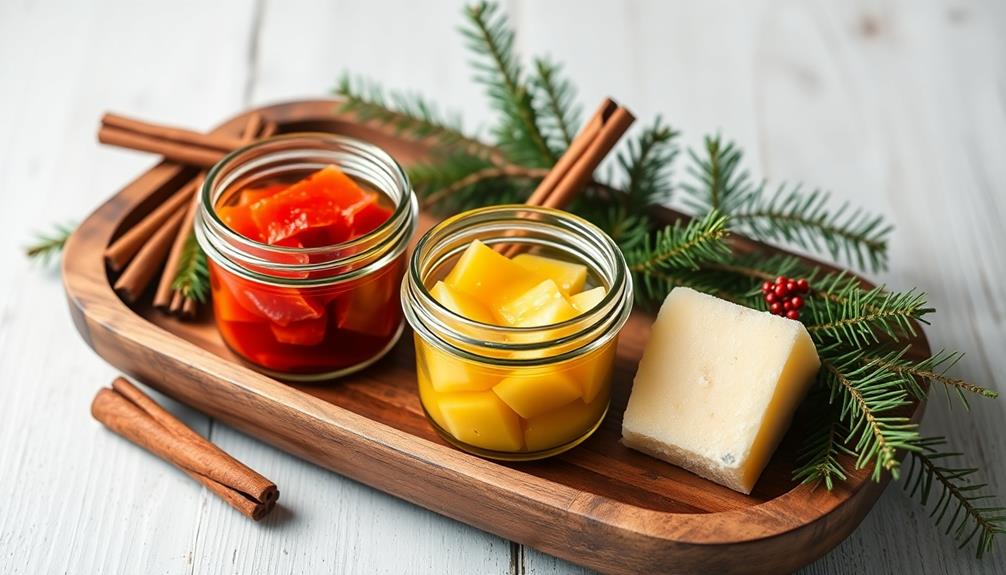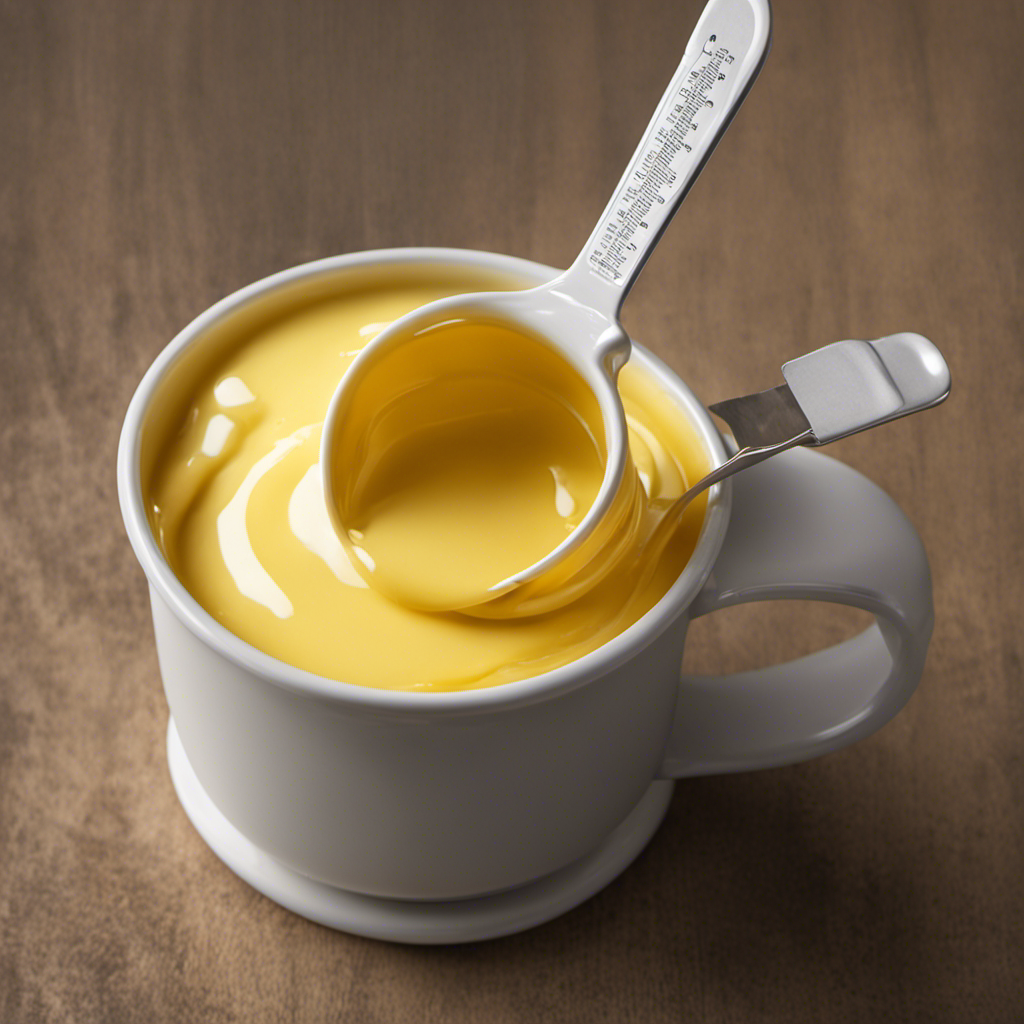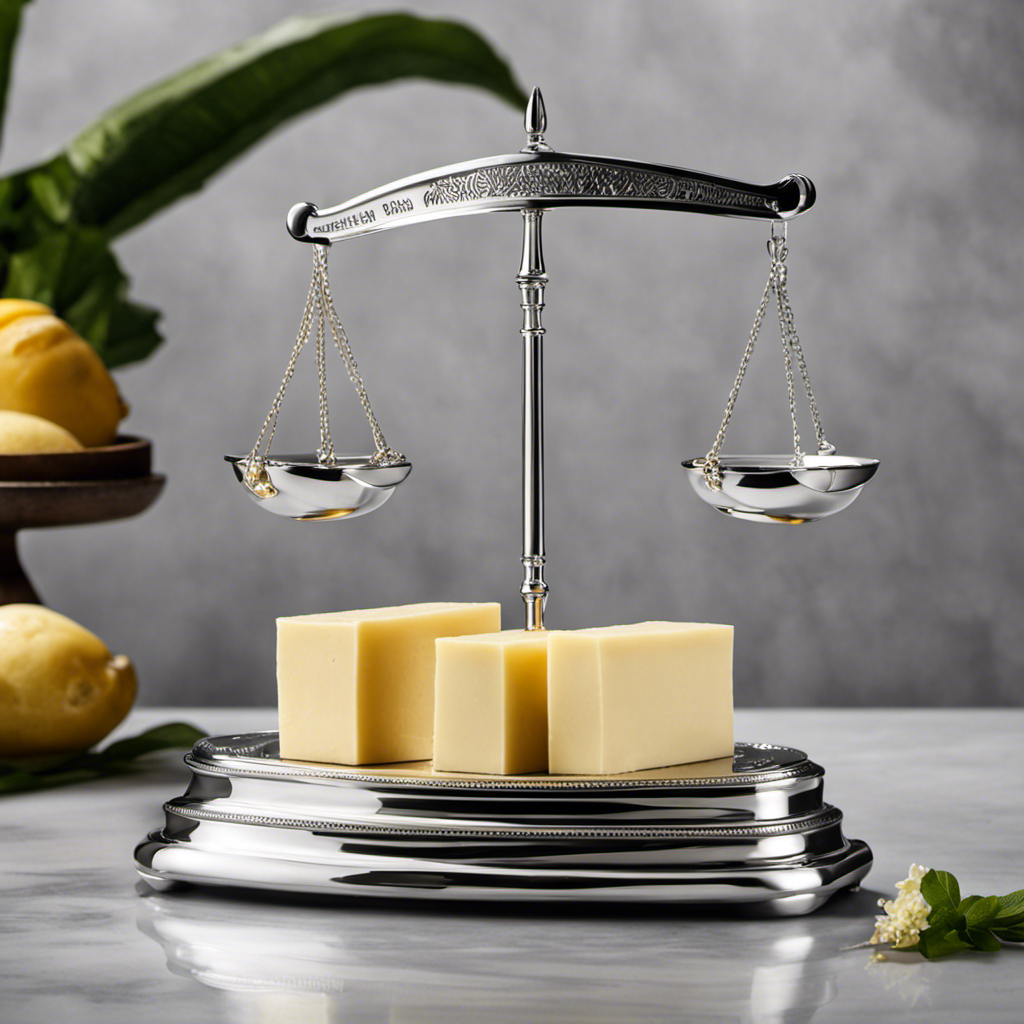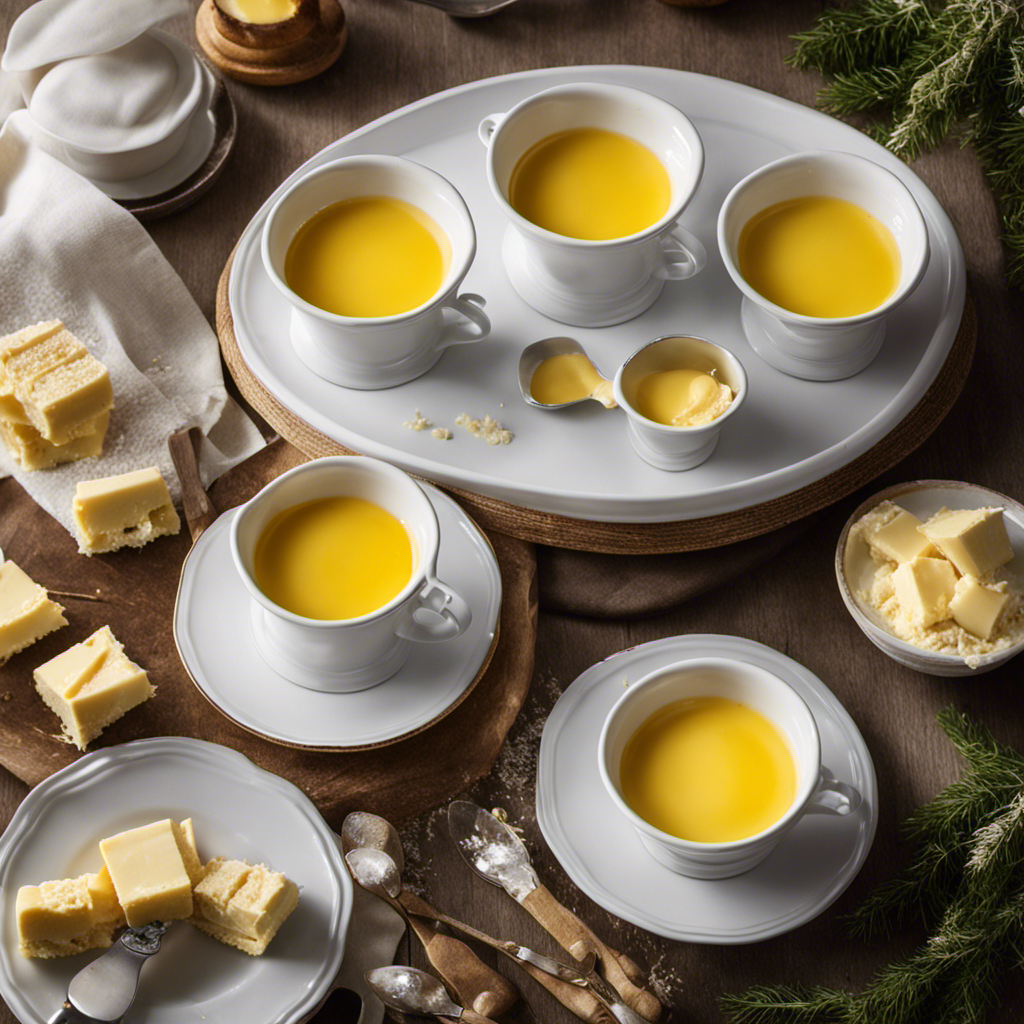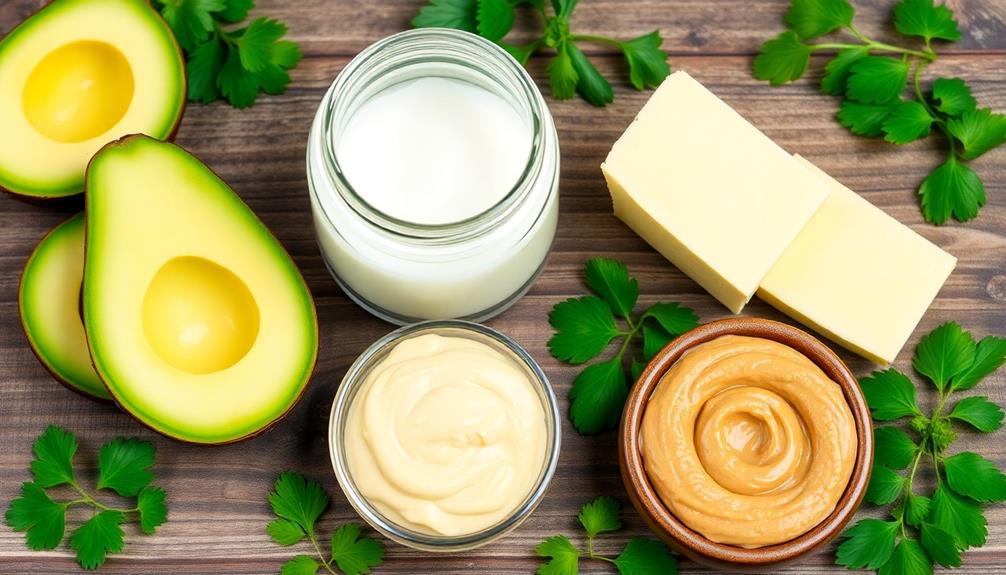The holiday butter gift set is a delightful homemade creation that captures the essence of the season, blending the rich, creamy goodness of premium butter with a symphony of festive flavors to spread cheer and delight among your loved ones. Originating in the early 20th century, this tradition has evolved with creative cooks experimenting with aromatic spices, herbs, and unique ingredients. Thoughtfully presented in vibrant packaging, these artisanal butter logs make for a heartfelt expression of care and generosity. Whether you're looking to elevate your holiday meals or seeking a unique edible gift, the holiday butter set is sure to impress. Let's explore the recipe and preparation steps to make your own…
Key Takeaways
- A holiday butter gift set is a heartfelt homemade present that captures the warmth and cheer of the season through creative flavor combinations and thoughtful presentation.
- The tradition of gifting flavored butters originated in the early 20th century as a gesture of appreciation from farmers and dairy producers during the winter months.
- Crafting a holiday butter gift set involves selecting high-quality butter, blending it with aromatic spices and herbs, shaping it into elegant forms, and wrapping it to enhance the overall appeal.
- Presenting the butter gift set on a decorative tray or platter, with festive accents and unique packaging, creates a visually stunning and emotionally impactful experience for the recipient.
- Beyond the holiday season, the versatility of a holiday butter gift set makes it a practical and cherished cooking companion that can elevate various meals and baking projects with its diverse flavor profiles.
History
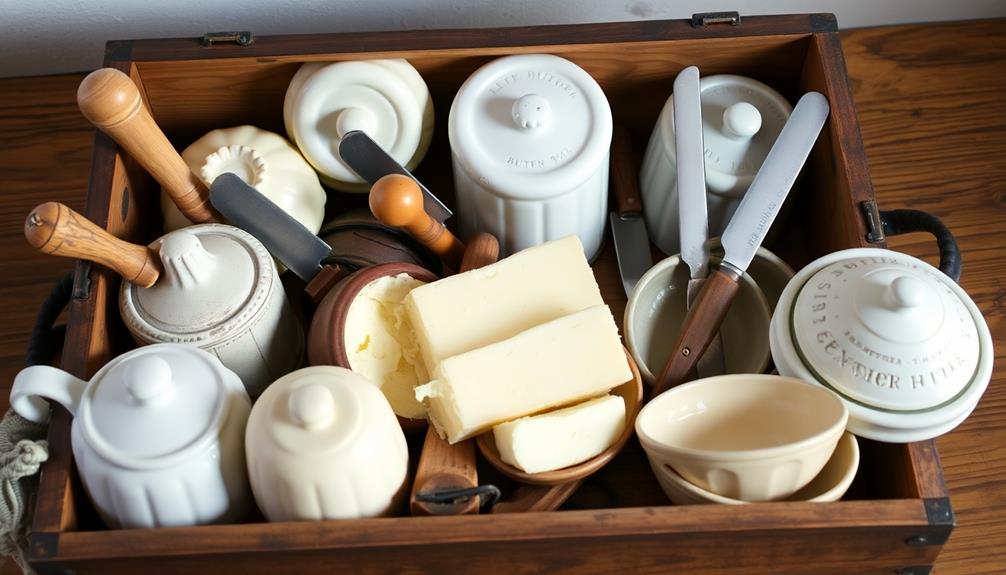
The holiday butter gift set has a rich history that dates back to the early 20th century. It all began as a simple gesture of appreciation, with farmers and dairy producers sharing their freshly churned butter with their local communities during the winter months.
These homemade gifts were a way to spread cheer and celebrate the season's bounty, reflecting the cultural significance of butter in various societies. Over time, the tradition evolved, and creative cooks started experimenting with flavors, blending in herbs, spices, and other delightful ingredients.
Today, the holiday butter gift set has become a beloved part of many families' yuletide traditions. Vibrant, festive packaging showcases the artisanal craftsmanship, while the rich, creamy texture and unique flavors delight the senses.
Whether you're sharing it with loved ones or keeping it all to yourself, this homemade treasure captures the essence of the holidays – a heartfelt expression of care and generosity. With each bite, you'll be transported to a time when simple pleasures brought the greatest joy.
Recipe
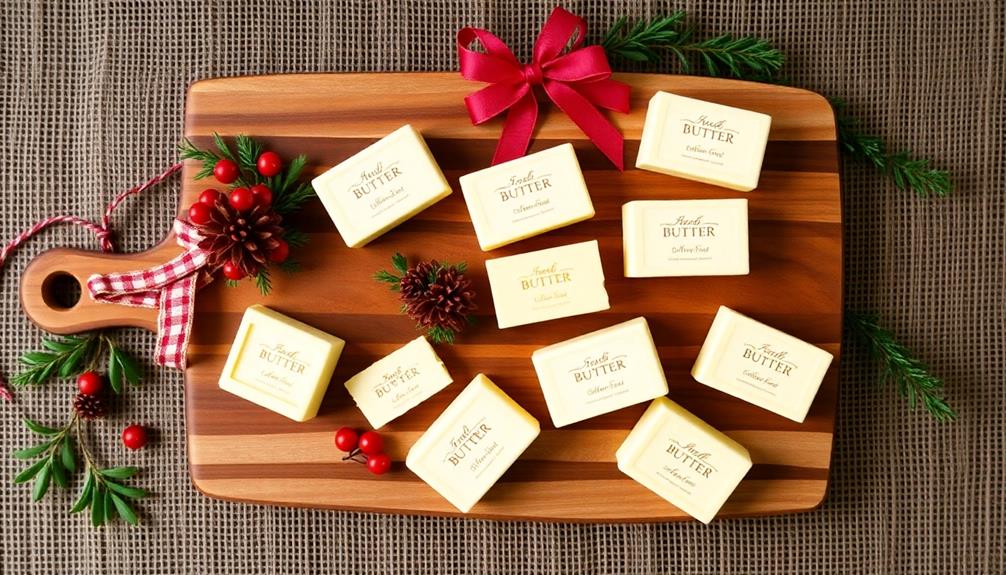
Butter is a versatile and essential ingredient in the kitchen, adding richness and flavor to a wide range of dishes, including baked goods that benefit from its creamy texture.
This holiday butter gift set offers a delightful selection of flavored butters that can elevate your cooking and baking experience, showcasing the culinary uses and varieties of butter.
Preparing these festive butters is a simple yet impressive way to create thoughtful homemade gifts for your loved ones.
Whether you're looking to add a special touch to your holiday meals or seeking a unique edible present, this recipe will guide you through the process of crafting these delectable butter options.
Ingredients:
- 1 pound unsalted butter, softened
- 1/4 cup honey
- 2 tablespoons finely chopped fresh rosemary
- 1 tablespoon finely chopped fresh thyme
- 2 teaspoons ground cinnamon
- 1 teaspoon ground nutmeg
- 1/2 teaspoon sea salt
Cooking Instructions:
In a large mixing bowl, combine the softened butter with the honey, rosemary, thyme, cinnamon, nutmeg, and sea salt.
Using a hand mixer or a wooden spoon, thoroughly mix the ingredients until the seasonings are evenly distributed throughout the butter.
Divide the flavored butter into four equal portions and shape each portion into a log or rectangle.
Wrap the butters individually in parchment paper or plastic wrap, and place them in the refrigerator to firm up for at least 2 hours or until ready to gift.
Tips:
When gifting the holiday butter set, consider presenting the individual butter logs in small jars or on a wooden board, accompanied by crackers, bread, or other accompaniments.
The flavored butters can be stored in the refrigerator for up to 1 week or frozen for up to 3 months.
Experiment with different herb and spice combinations to create your own unique flavor profiles for a personalized touch.
Cooking Steps
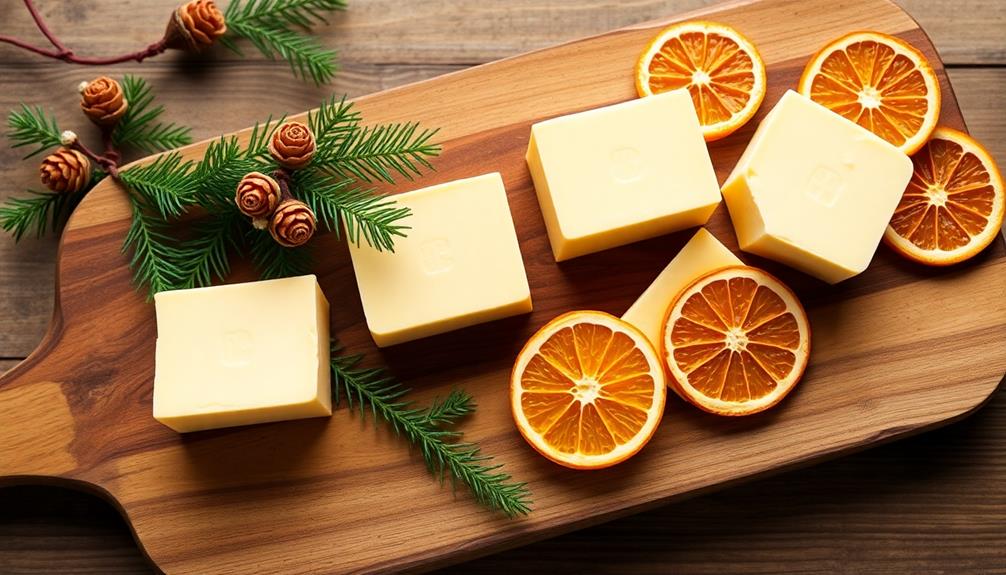
Gather up some high-quality butter, which is a source of vitamins A, D, E, and K, and your favorite spices to create a delightful homemade gift set.
Expertly mix the butter with the seasonings, then shape the fragrant mixture into charming little rounds.
You can also consider using different types of butter to enhance the flavors.
Wrap the shaped butter in parchment paper and display the wrapped pieces for a festive and thoughtful holiday treat.
Step 1. Gather High-Quality Butter Ingredients
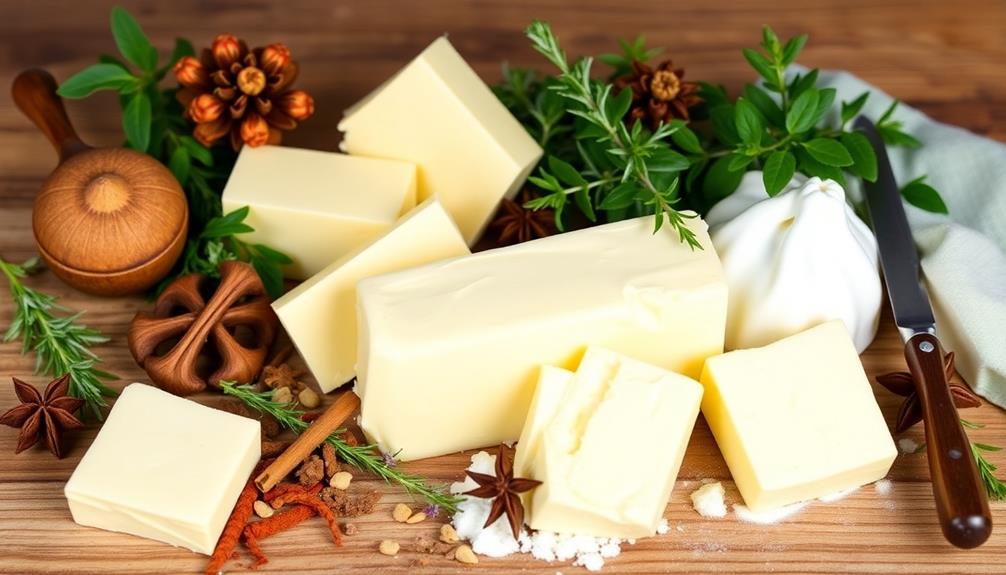
Selecting the right butter is the foundation for a delectable holiday butter gift set. When choosing your ingredients, opt for high-quality, locally-sourced butter, preferably from grass-fed cows. The rich, creamy texture and vibrant golden hue of this premium butter will elevate your homemade treats.
Look for small-batch or artisanal dairy producers in your area – their butter is often crafted with meticulous care and exceptional flavor.
Consider adding a variety of butter types to your gift set, such as salted, unsalted, and flavored options. Flavored butters, infused with herbs, spices, or citrus, can provide a unique and memorable touch. Experiment with fragrant rosemary, zesty lemon, or warm cinnamon to create truly special spreads.
Arrange the different butter varieties in an attractive container, perhaps a wooden box or a ceramic dish, to showcase their artisanal quality. With high-quality ingredients and a thoughtful presentation, your holiday butter gift set is sure to delight family and friends.
Step 2. Mix Butter With Spices
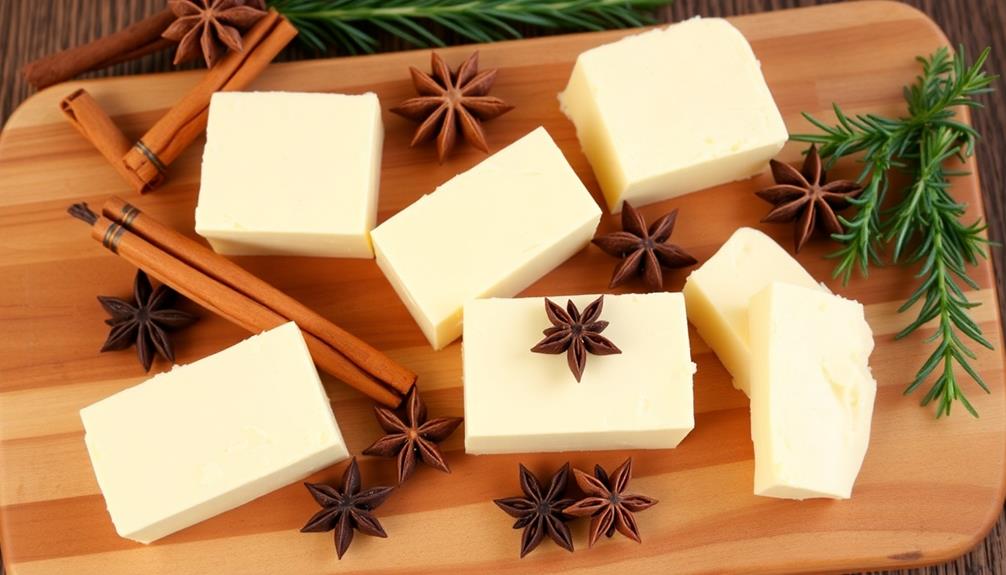
To craft your flavorful holiday butter gift set, begin by combining the butter with an array of aromatic spices. In a large bowl, soften the butter until it's pliable, then add a pinch of ground cinnamon, a dash of nutmeg, and a sprinkle of ground ginger.
Knead the spices into the butter until they're evenly distributed, creating a warm, festive blend that tantalizes the senses.
Next, consider adding a touch of sweetness by incorporating a tablespoon of honey or maple syrup. The gentle sweetness pairs beautifully with the savory spices, creating a well-balanced flavor profile.
Gently fold in the sweetener, taking care not to overmix and alter the butter's smooth, creamy texture.
As a final flourish, you can stir in a handful of finely chopped herbs, such as rosemary or thyme, to add a fresh, herbaceous note.
The combination of spices, sweetness, and herbs will result in a truly exceptional holiday butter that your loved ones will adore.
Step 3. Shape Butter Into Rounds
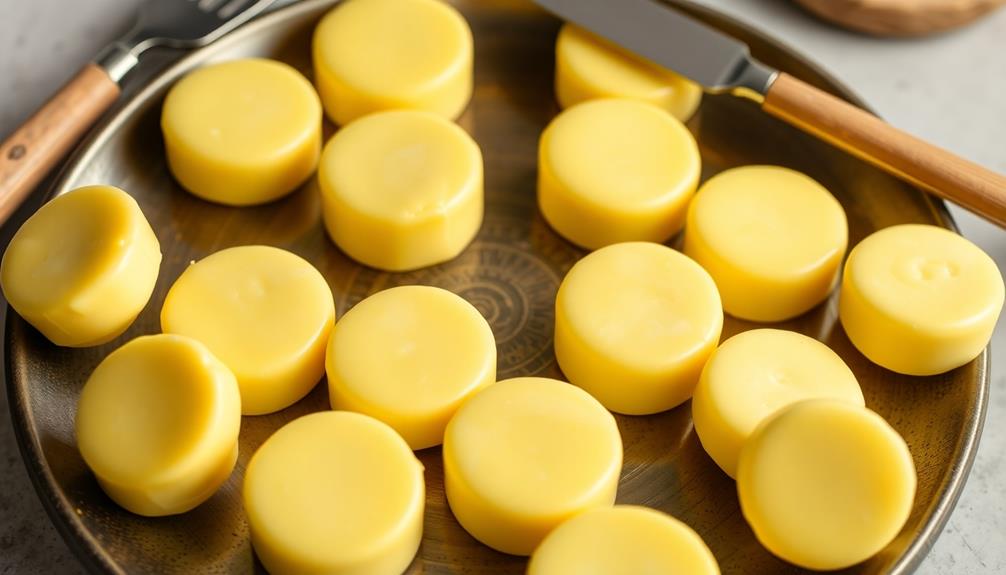
With your rich, flavorful butter blend ready, it's time to shape it into delightful rounds for gifting.
Grab a clean, chilled surface and your trusty cookie cutter or biscuit mold. Gently press the butter into the mold, pressing firmly to ensure a clean, defined shape. Slowly release the mold, revealing your perfectly sculpted butter rounds.
If using a cookie cutter, roll the butter between your palms to create smooth, uniform discs.
Arrange the butter shapes on a parchment-lined baking sheet, leaving a bit of space between each one. Once you've transformed all your butter, pop the sheet into the fridge to firm up, about 30 minutes. This will help the rounds hold their shape when you package them up.
With your beautifully crafted butter rounds ready, you're one step closer to creating the perfect homemade holiday gift.
Wrap them up with care, adding a personal touch that's sure to delight your loved ones.
Step 4. Wrap Shaped Butter in Parchment
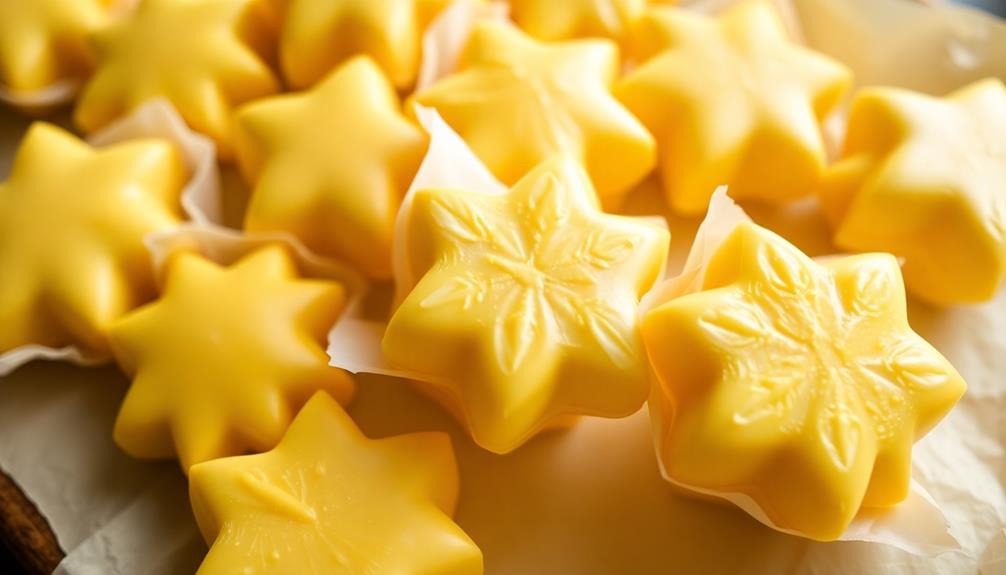
Now that your beautifully sculpted butter rounds have chilled and firmed up, it's time to wrap them up for gifting.
Grab a sheet of parchment paper and place one of your butter rounds in the center. Gently lift the edges of the parchment and wrap it around the butter, making sure to create a tight seal. Crease the edges to secure the wrap.
Repeat this process for each of your butter rounds, taking care to label each one with the flavor if you've made multiple varieties.
Once all your butters are wrapped, it's time to get creative with the presentation.
Consider tying the parchment-wrapped butters with twine or ribbon, adding a festive tag or label. You can even group them together in a decorative tin or box to create a lovely holiday butter gift set.
The possibilities are endless! With a little effort, you'll have a thoughtful homemade present that's sure to delight your loved ones this season.
Step 5. Display Wrapped Butter
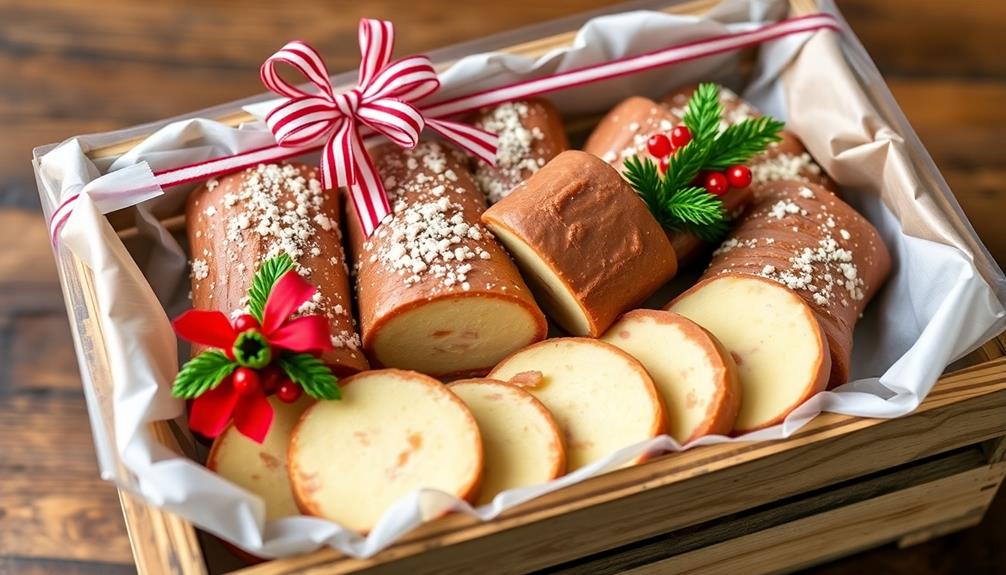
Once your butter rounds are neatly wrapped in parchment, you can start assembling the holiday butter gift set.
Arrange the wrapped butters in a pleasing pattern on a decorative tray or platter. You could place them in a row, creating a beautiful array of colors and shapes. Alternatively, you could group them in a circular or fan-like design, adding visual interest.
Consider adding festive accents to the display, such as sprigs of fresh rosemary, thyme, or sage. These fragrant herbs won't only look beautiful but also infuse the air with a delightful aroma.
If you want to take it a step further, you could dust the wrapped butters with a light coating of powdered sugar or cocoa powder, giving them a delicate, decorative finish.
Once your butter gift set is arranged, you can add a personalized touch by tying each piece with a colorful ribbon or string. This small detail will make your homemade present feel extra special and thoughtful.
Final Thoughts
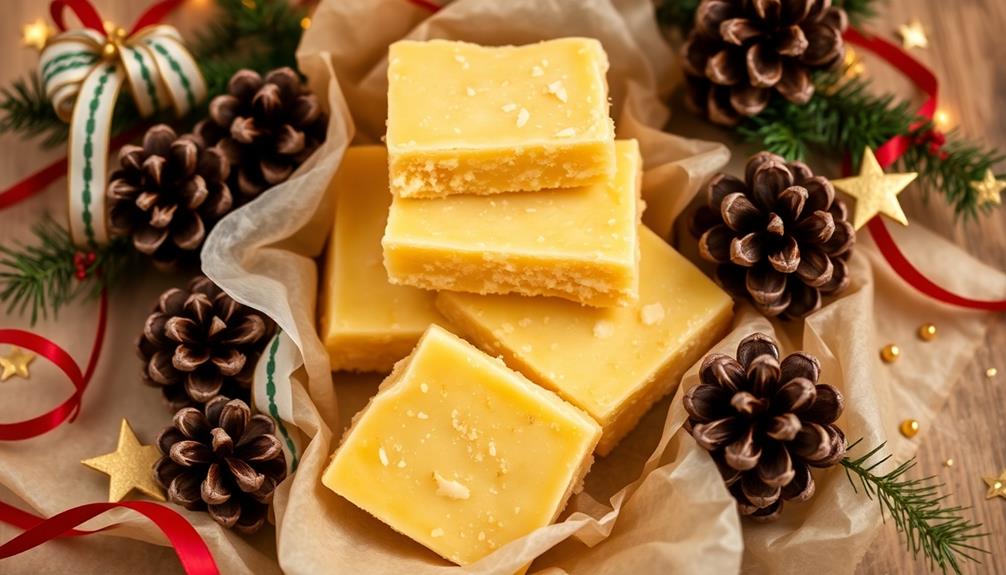
The holiday butter gift set offers a delightful way to spread seasonal cheer, providing a thoughtful and versatile cooking companion. Imagine the joy on your loved ones' faces as they unwrap this unique and personalized present.
The vibrant colors and festive designs instantly evoke the warmth and magic of the holiday season, making it a cherished addition to any home.
Beyond its visual appeal, the butter gift set is a practical and useful gift that can elevate any meal or baking project. Whether they choose to savor the flavors on their own or incorporate the butters into their culinary creations, your recipients will appreciate the high-quality ingredients and the care you've put into selecting this special treat.
As the holidays approach, the holiday butter gift set stands out as a thoughtful and delightful way to spread joy and cheer. Its versatility and appeal make it a truly memorable gift that will be treasured long after the season has passed.
Frequently Asked Questions
How Long Will the Butter Gift Set Last After Being Made?
The butter gift set will last for up to 2 weeks when stored properly in the refrigerator. It's best enjoyed within that timeframe to ensure the freshness and quality of the homemade butter.
Can the Butter Be Frozen for Longer Storage?
Yes, you can freeze the butter for longer storage. Freezing the butter will extend its shelf life, allowing you to enjoy the homemade spread for several months. Just be sure to properly wrap and store the butter before freezing.
What Kind of Packaging Is Best for the Butter Gift Set?
When packaging your butter gift set, consider airtight, moisture-resistant containers like glass jars or sturdy plastic tubs. This will help preserve the butter's freshness and prevent it from absorbing other flavors or odors in the refrigerator.
Are There Any Dietary Considerations for the Butter Recipe?
When creating your butter recipe, consider any dietary restrictions or preferences your recipients may have. You'll want to accommodate vegan, lactose-intolerant, or other dietary needs to ensure everyone can enjoy your thoughtful gift.
Can the Butter Be Flavored With Different Herbs or Spices?
Absolutely, you can easily flavor the butter with different herbs or spices. Try adding minced garlic, rosemary, thyme, or even a blend of your favorite seasonings to create unique and flavorful butter spreads.
